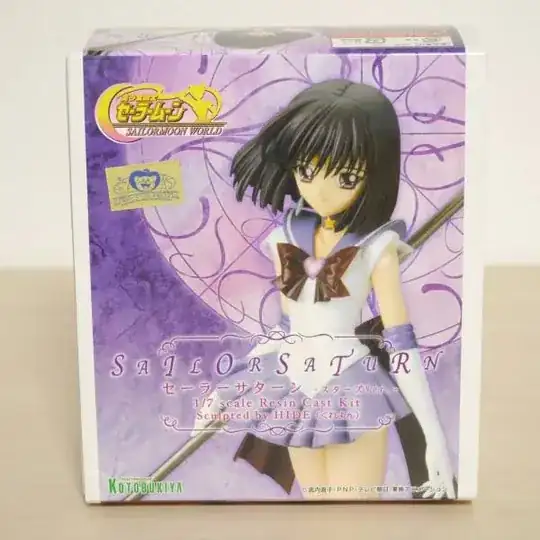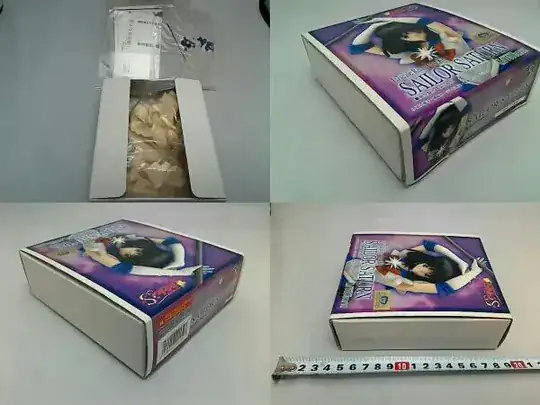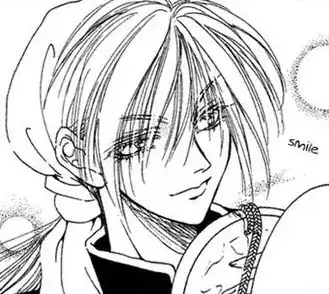First,
- Check if there is a fan website that catalogues the produced figures for the series you're interested in.
- Check the catalogues at MyFigureCollection.net, make an account, and consult collectors there.
- Browse the website of the Japanese manufacturer/s that produce the official figures and familiarize yourself with them (even if you don't read Japanese, you can navigate a bit with GoogleTranslate on and just by trial-and-error) and take note of 1) the market price, 2) details of the packaging, and 3) when the figure was released (if it is brand-spanking-new, the chance of bootlegs floating around already is low).
- Even if you're standing at a convention booth with a figure package in your hand and wondering, pull out your smartphone/tablet/laptop and do a quick Google search for name-of-figure + manufacturer+name-on-box or model-series-name-on-box + the word "bootleg": do other collectors own this? Have other collectors warned against buying this?
Japanese companies are very unlikely to sell you a bootleg, so if you are concerned about shelling out your hard-earned cash on the real thing, you can have more peace-of-mind if you purchase from a Japanese store, its online website, or its Rakuten online shop. Even if you are buying a used figure from Mandarake, you will know the staff have already inspected and verified it as being, to the best of their knowledge, an authentic figure. Another option is to bid on Yahoo Japan Auctions, where most sellers are Japanese (some are real stores that also have an online auction presence, but many are individuals); since the Japanese generally have a strong ethic regarding honesty about their products, you can also have the piece of mind that virtually none of the sellers are trying to swindle you (I have purchased well over a hundred items from sellers there with no problems. If a seller has any concerns whatsoever about the condition of the product, they will explain this in the item description and/or advise to carefully inspect the uploaded photos; they lean towards cautioning potential bidders not to bid if you have any possible qualms about the item: in all such disclaimers cases for the dozens of items I have won, only 1 of them was actually in poor condition as the seller had mentioned. In all the thousands of auction listings I have perused, I have not come across any bootleg items. This is not to claim that none ever crop up, but there is not as much to worry about as when buying from eBay or at a convention outside of Japan). Most Japanese auction sellers do not personally ship to overseas customers, so if you do not have an address within Japan, you can use a proxy bidding service.
If you are in a situation where you're looking at the figure and you don't have a chance to investigate online before buying (or not):
- The first thing to look for (as I assume we are talking about bootlegs that look pretty real, rather than ones where, on first glance, you can tell the quality is shoddy) is any non-Japanese text, such as Chinese, Korean, Thai, etc. While there are figures officially-licensed for production and sales outside of Japan, most bootlegs are also produced outside of Japan. If you see non-Japanese text, be wary.
- Next, locate the logo of the series and a copyright (such as the copyright symbol © or the trademark letters "TM"). This might be printed directly on the box, might be embossed into the cardboard of the box, and/or there might be a gold-foil sticker.
- Carefully check the font of the lettering. Some official Japanese figure boxes have English on them, but it follows a pattern, so that is a reason to familiarize yourself with what words/phrases/font the manufacturer uses for its printing. Seeing the name of the series or character typed in another font than the company usually uses should be a red flag.
- Japanese companies are very meticulous about packaging, so if the box looks like 1) the art doesn't quite line up with the box edges, 2) the art is slightly blurry, and/or 3) the colors are too harsh, it probably is fake. In other words, a bootleg package might be created by taking a digital photograph or scan of the original box and printing a copy, so it might lose crispness in the reproduction process.
- Something to be aware of is that Japanese high-quality models (garage kits) are usually sold unpainted (the body comes in pieces that must be assembled and is cream-colored or light gray [paints must be purchased separately]); generally, if you are looking at something that is painted or colored plastic, either 1) it was an unpainted model that someone painted and is selling their painted version (a model painted by someone else is not mint condition, yet it often has a high price tag to pay the artist for their time and skill in painting it for you. This is a valid option of something to buy, but pay attention to whether the paint colors used accurately match the colors from the real series; some artists use their creative license and change details in the paint job), 2) it is a plastic figure produced as such by the company (the plastic sort are usually cheaper in price than the top quality line of models. One type is the posable, jointed limb plastic models. Another type are lower-quality figures marketed toward kids with pricing that parents, rather than serious collectors, would be willing to buy), or 3) it is a bootleg.
As an example, here's a helpful review of a Sailor Saturn figure posted on MyFigureCollection.net and the corresponding article "Identifying SHFiguarts Sailor Moon Series Bootlegs" at the fansite Sailor Moon Collection.
An official figure box (the Toei animation gold sticker, the real logo ["Sailormoon World" is the official logo created for the 20th anniversary merchandise, not one of the original TV series official logos], the copyright info at the bottom edge, standard pattern to the lettering font):

What a garage kit figure looks like pre-painted (cream-colored pieces):

What a garage kit figure looks like after being painted by someone:



